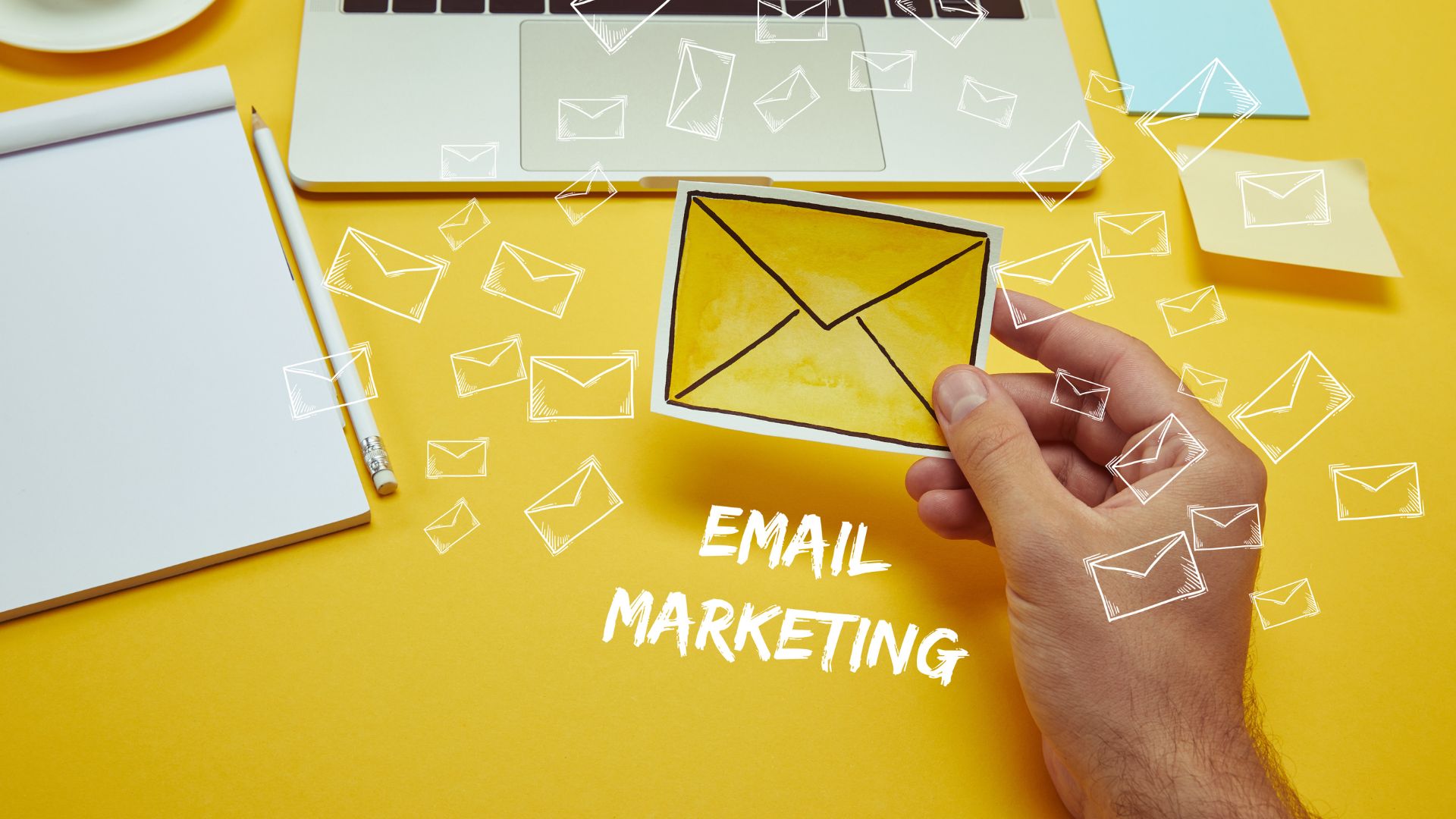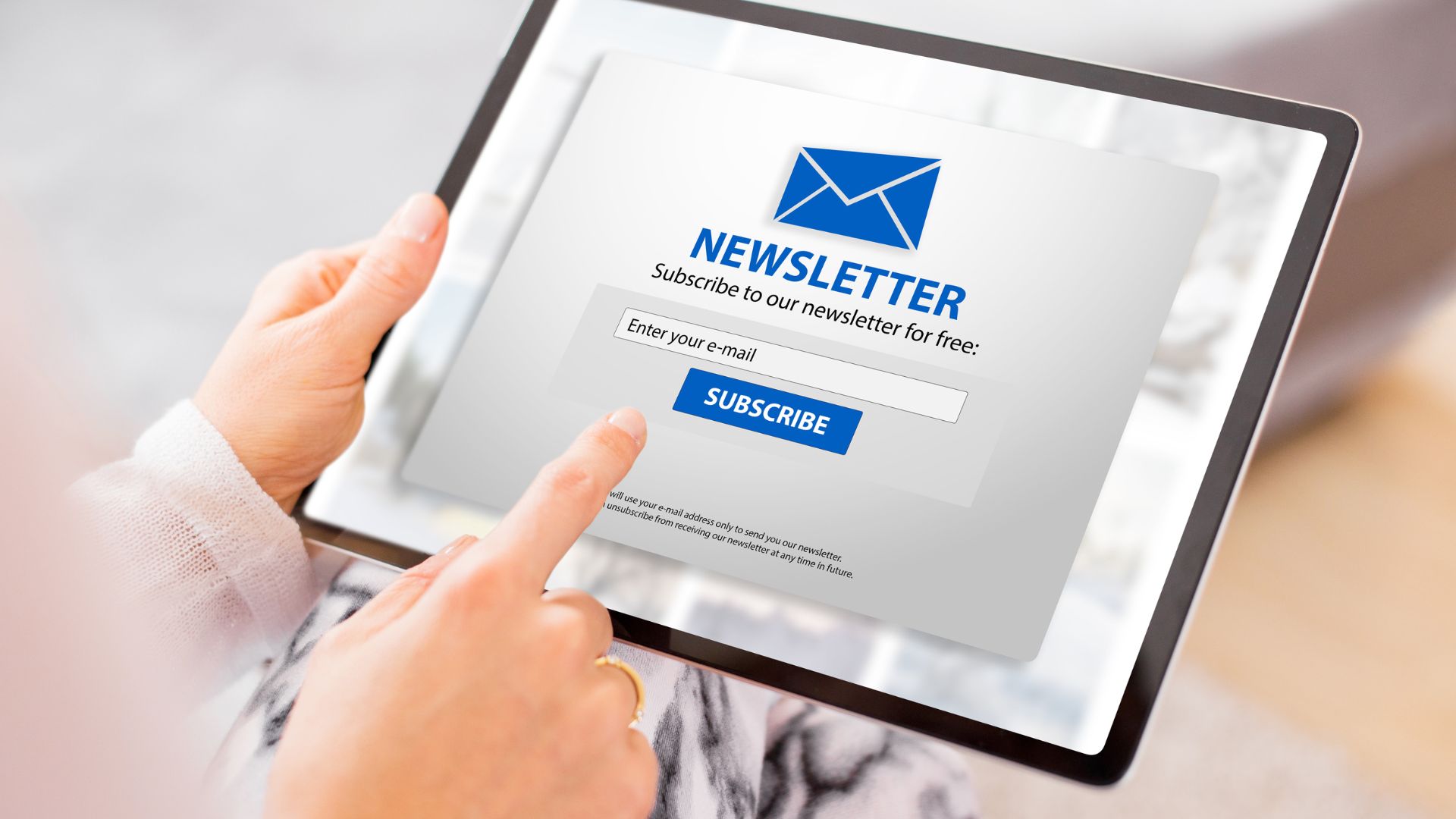Email Marketing for Beginners: Your Path to Success
Hey there! I want to tell you a secret that can skyrocket your business growth with Email Marketing for Beginners.
Ready? It’s email marketing! I know, I know – you might be thinking, “Ugh, not another marketing tactic.”
But trust me, email marketing is like the superhero of the digital world, swooping in to save the day (and your bottom line).
Picture this: You’re sitting at your desk, sipping your morning coffee, when suddenly your inbox pings. That message makes you sit up and take notice. That’s the power of a well-crafted email in Email Marketing for Beginners!
With over 4 billion email users worldwide, there’s no denying that email marketing is a force to be reckoned with.
But here’s the thing – you don’t need to be a marketing guru to harness the power of email.
In fact, email marketing is perfect for beginners who are just starting to dip their toes into the digital marketing pool.
So, let’s dive in and explore how you can use email marketing to build relationships, boost engagement, and drive sales like a pro! 📈
Table Of Contents:
-
- Understanding the Basics of Email Marketing
- Key Benefits of Email Marketing for Beginners
- How Email Marketing Fits into Your Overall Marketing Strategy
- Crafting Compelling Email Subject Lines
- Writing Engaging Email Content
- Understanding Different Types of Marketing Emails
- Building and Managing Your Email List
- Choosing the Right Email Marketing Platform for Your Business
- Top Email Marketing Tools for Beginners
- Setting Up Your Email Marketing Account
- Designing High-Converting Opt-In Forms
- Promoting Your Email Newsletter on Other Channels
- Optimizing Your Email Subject Lines for Higher Open Rates
- Improving Click-Through Rates with Compelling Calls-to-Action
- Segmenting Your Email List for Targeted Campaigns
- Minimizing Unsubscribe Rates and Maintaining List Health
- Key Email Marketing Metrics to Track
- Conducting A/B Tests to Optimize Your Campaigns
- Using Email Marketing Analytics to Improve Performance
- Integrating Email Marketing with Other Marketing Channels
- Automation and Advanced Email Marketing Techniques
- Email Marketing Best Practices and Common Mistakes to Avoid
- Scaling Your Email Marketing Efforts as Your Business Grows
- Conclusion
Email marketing. You’ve heard the term thrown around, but what exactly is it?
And more importantly, why should you care as a beginner in the digital marketing world?
Let me break it down for you. Email marketing is the practice of sending targeted, personalized emails to a group of people with the goal of driving profitable customer action.
It’s a way to build relationships, promote your brand, and ultimately, boost your bottom line.
Understanding the Basics of Email Marketing
At its core, email marketing is about connecting with your audience. It’s a direct line of communication that allows you to deliver value, build trust, and guide your subscribers along their customer journey.
Think of it like having a one-on-one conversation with each and every person on your email list. You get to share your story, offer solutions to their problems, and establish yourself as a trusted resource in your industry.
Key Benefits of Email Marketing for Beginners

So, why should you invest your time and energy into email marketing?
For starters, it’s one of the most cost-effective ways to reach your target audience.
Unlike other digital marketing channels, email allows you to communicate with your subscribers without breaking the bank.
But the benefits don’t stop there. Email marketing also helps you:
- Build brand awareness
- Nurture leads and guide them towards a purchase
- Drive traffic to your website or blog
- Increase customer loyalty and retention
- Generate measurable results and ROI
In fact, studies show that email marketing has a potential ROI of $42 for every dollar spent. That’s a pretty impressive return, if you ask me.
How Email Marketing Fits into Your Overall Marketing Strategy

Now, you might be thinking, “That’s great, but how does email marketing fit into my overall marketing strategy?” The answer is simple: seamlessly.
Email marketing is the glue that holds your various marketing efforts together. It allows you to connect the dots between your social media, content marketing, and paid advertising campaigns, creating a cohesive and effective marketing campaign.
For example, let’s say you’ve just published a new blog post. You can use email to drive traffic to that post, encouraging your subscribers to read, share, and engage with your content. Or, if you’re launching a new product, you can create a targeted email campaign to build buzz and drive pre-orders.
The possibilities are endless, but the key is to use email as a strategic tool to support and amplify your other marketing efforts.
Alright, now that you understand the basics of email marketing and why it’s so important, let’s dive into the nitty-gritty of creating a successful email marketing campaign.
There are a few key components that every great email campaign should have…
Crafting Compelling Email Subject Lines
Your email subject line is like the gatekeeper to your content. It’s the first thing your subscribers see, and it determines whether they’ll open your email or send it straight to the trash.
To craft a compelling subject line, you need to:
- Keep it short and sweet (aim for 50 characters or less)
- Use actionable language that entices the reader to click
- Personalize it with the subscriber’s name or other relevant information
- Avoid spammy words or phrases that could trigger filters
For example, instead of a generic subject line like “Our Latest Newsletter,” try something more specific and intriguing, like “3 Secrets to Boosting Your Email Open Rates.”
Writing Engaging Email Content
Once you’ve gotten your subscribers to open your email, the real work begins. Your content needs to be engaging, informative, and valuable enough to keep them reading and coming back for more.
To write engaging email content, focus on:
- Telling a compelling story that resonates with your audience.
- Using a conversational tone that feels like you’re speaking directly to the reader.
- Breaking up your text with subheadings, bullet points, and images to improve readability.
- Including a clear call-to-action that guides the reader towards your desired outcome.
Remember, your goal is to provide value and build a relationship with your subscribers, not just sell to them. Focus on creating content that educates, entertains, or inspires, and the sales will follow.
Understanding Different Types of Marketing Emails

Not all marketing emails are created equal. There are several different types of emails you can send, each with its own unique purpose and goal.
Some common types of marketing emails include:
- Promotional emails: These emails are designed to promote a specific product, service, or offer. They often include a discount code or other incentive to encourage the reader to take action.
- Transactional emails: These are automated emails triggered by a specific action, such as a purchase confirmation or shipping notification. They provide important information to the customer and help build trust in your brand.
- Newsletter emails: These are regular emails sent to your subscribers to keep them informed and engaged with your brand. They often include a mix of educational content, industry news, and promotional offers.
The key is to choose the right type of email for your specific goal and audience. For example, if you’re looking to drive sales, a promotional email might be your best bet. But if you’re looking to build a long-term relationship with your subscribers, a newsletter email could be more effective.
Building and Managing Your Email List
Of course, none of this matters if you don’t have anyone to send your emails to. That’s where building and managing your email list comes in.
To build a high-quality email list, you need to:
- Create valuable content that attracts your target audience.
- Use lead magnets and opt-in forms to capture email addresses.
- Make it easy for people to subscribe and unsubscribe from your list
- Regularly clean and segment your list to ensure high deliverability and engagement.
Remember, the quality of your email list is far more important than the quantity. It’s better to have a smaller list of engaged subscribers than a large list of people who never open your emails.
Now that you know the essential components of a successful email marketing campaign, it’s time to get started with the right tools and platforms.
There are countless email marketing platforms out there, each with its own unique features and benefits. As a beginner, it can be overwhelming to try and choose the right one for your business.
Choosing the Right Email Marketing Platform for Your Business
When choosing an email marketing platform, there are a few key factors to consider:
- Ease of use: Look for a platform with a user-friendly interface and intuitive drag-and-drop email builder.
- Automation capabilities: Choose a platform that allows you to set up automated email sequences and triggered campaigns based on subscriber behavior.
- Integrations: Make sure the platform integrates with your other marketing tools, such as your website, social media accounts, and CRM.
- Pricing: Consider your budget and look for a platform that offers a pricing plan that fits your needs and scales with your business.
Some popular email marketing platforms for beginners include:
Personally, I suggest Lead Recruiter Pro. It gives you the ability to have unlimited emails, send unlimited emails, as well as have unlimited funnels without any traffic limitations.
It’s the best platform with the most features at the best price out there.
Top Email Marketing Tools for Beginners

In addition to your email marketing platform, there are a few other tools that can help you create and manage your campaigns more effectively:
- Email subject line prompt: You can use AI to help create subject lines that get opened. AI can help you do a lot more too. Check out the AI Conversion Code here to see more.
- Email list cleaning service: Services like NeverBounce can help you remove invalid or inactive email addresses from your list, improving your deliverability and sender reputation.
- Email tracking and analytics: Tools like Lead Recruiter Pro can help you track opens, clicks, and other engagement metrics, giving you valuable insights into your campaign performance. It also allows you to build funnels, set up automations, integrate AI and much more.
Again, the key is to choose tools that fit your specific needs and budget. Don’t feel like you need to invest in every shiny new tool out there – start with the basics and add on as your email marketing strategy grows and evolves.
Setting Up Your Email Marketing Account
Once you’ve chosen your email marketing platform, it’s time to set up your account and start building your first campaign.
Here are the basic steps to get started:
- Sign up for an account with your chosen platform. ex: Lead Recruiter Pro.
- Set up your email list and import any existing subscribers.
- Create a welcome email to introduce new subscribers to your brand.
- Design your first email campaign using the platform’s drag-and-drop builder or pre-designed templates.
- Set up any automated sequences or triggered campaigns based on your goals and subscriber behavior.
- Test your email to make sure it looks and functions as intended.
- Schedule your email to send at the optimal time for your audience.
- Monitor your campaign performance and adjust your strategy as needed.
Remember, email marketing is an ongoing process, not a one-time task. As you continue to grow your list and refine your strategy, you’ll learn what works best for your specific audience and goals.
The key is to stay consistent, provide value, and always keep your subscribers’ needs and preferences in mind. With the right approach and tools, email marketing can be a powerful way to build relationships, drive engagement, and grow your business.
When you’re just starting out with email marketing, growing your email list can feel like an uphill battle. But don’t worry, I’ve been there too.
The key is to create irresistible lead magnets that your target audience can’t resist.
Think ebooks, whitepapers, checklists, templates – anything that provides real value and solves a problem for your potential subscribers. One of my favorite lead magnets is the humble content upgrade.
Let’s say you have a blog post that’s getting tons of traffic. Why not create a complementary resource, like a handy checklist or template, and offer it in exchange for an email address?
It’s a win-win: your readers get extra value, and you get to grow your email list with highly engaged subscribers.
Designing High-Converting Opt-In Forms

Of course, even the juiciest lead magnet won’t do much good if your opt-in form falls flat. Your form should be eye-catching, on-brand, and super easy to fill out. Keep it simple with just a couple of fields – first name and email address is plenty to start. And make the first name optional.
Make sure the copy on your form is compelling and clearly communicates the value of signing up.
Promoting Your Email Newsletter on Other Channels
Growing your email list isn’t just about what happens on your website. To really supercharge your subscriber growth, you need to get the word out on other channels too. Social media is a great place to start.
Share snippets of your email content on Twitter, Facebook, LinkedIn – wherever your audience hangs out. Include a link to your opt-in form and watch those subscribers roll in.
You can also partner up with other businesses or influencers in your niche for some cross-promotion.
Swap guest posts, run joint webinars, or even just give each other a shoutout in your respective newsletters. It’s all about getting your opt-in form in front of fresh eyes.
“The money is in the list, but the fortune is in the follow-up.” – Unknown
Growing an email list takes time and consistency, but with the right strategies in place, you’ll be well on your way to building a thriving community of engaged subscribers.
Keep at it, and remember: every single email address represents a real person who’s raised their hand and said, “Yes, I want to hear from you.”
That’s powerful stuff. Okay, so you’ve got a growing list of email subscribers – now what? It’s time to start crafting email campaigns that actually get opened, clicked, and converted.
Optimizing Your Email Subject Lines for Higher Open Rates

Your email subject line is like the headline of a news article – if it doesn’t grab attention and pique curiosity, no one’s going to read any further. In fact, 47% of email recipients decide whether to open an email based on the subject line alone. So how do you write subject lines that get those opens? First, keep it short and punchy – aim for 50 characters or less. Use actionable language and personalize whenever possible, like including the recipient’s first name. One sneaky tactic I love is using a cliffhanger subject line, something like “You won’t believe what happened next…” It taps into that innate human curiosity and practically begs to be opened.
Improving Click-Through Rates with Compelling Calls-to-Action
Getting your email opened is half the battle – now you need to entice readers to actually click through to your website or landing page. That’s where a strong call-to-action (CTA) comes in.
Your CTA should be prominently placed, visually distinct from the rest of your email content, and crystal clear about what you want the reader to do.
Use action-oriented language like “Shop now,” “Download your free guide,” or “Claim your discount.”
Email marketing is all about putting the right message in front of the right people at the right time. Segmentation, automation, and analysis are key to maximizing conversions and ROI. #emailmarketing #conversionrates
— Julia McCoy (@JuliaEMcCoy) March 3, 2023
Segmenting Your Email List for Targeted Campaigns
Not all email subscribers are created equal. They have different interests, pain points, and buying behaviors. That’s why segmenting your email list is so powerful. By dividing your list into smaller groups based on specific criteria, you can create hyper-targeted campaigns that really resonate. Maybe you segment based on demographics like age or location, or behavior like past purchases or email engagement. Mailchimp found that segmented campaigns have a 14.31% higher open rate than non-segmented campaigns. That’s the power of relevance at work.
Minimizing Unsubscribe Rates and Maintaining List Health
Of course, even with the most targeted and compelling email campaigns, some folks are going to unsubscribe. And that’s okay. In fact, a healthy unsubscribe rate means you’re staying relevant to the people who really want to hear from you.
To keep your list in tip-top shape, make sure every email includes an easy-to-find unsubscribe link.
Don’t try to hide it in tiny text or make readers jump through hoops to opt out. A clean, well-maintained list is better than a big one full of unengaged subscribers.
You should also be regularly cleaning your list by removing bounced emails and inactive subscribers. It may feel counterintuitive to trim your list, but trust me – quality trumps quantity every time.
You’ve crafted the perfect email campaign, hit send, and watched the opens and clicks roll in. Now what? It’s time to dive into your email marketing analytics and see what’s really working (and what’s not).
Key Email Marketing Metrics to Track
There are a few key metrics I always keep an eye on:
– Open rate: The percentage of subscribers who opened your email
– Click-through rate: The percentage of subscribers who clicked a link in your email
– Conversion rate: The percentage of subscribers who took a desired action, like making a purchase or filling out a form
– Unsubscribe rate: The percentage of subscribers who opted out of your emails
– Bounce rate: The percentage of emails that couldn’t be delivered
Together, these metrics give you a high-level view of how your emails are performing and where there’s room for improvement.
Conducting A/B Tests to Optimize Your Campaigns
One of the most powerful tools in your email marketing arsenal is the humble A/B test. Also known as a split test, A/B testing lets you compare two versions of an email to see which one performs better.
You can test just about anything – subject lines, calls-to-action, images, even send times. Just make sure you’re only testing one element at a time so you can isolate what’s actually moving the needle.
I like to start with subject line tests since they have such a big impact on open rates.
I’ll come up with two variations, send them to a small portion of my list, and then roll out the winner to the rest of my subscribers. Rinse and repeat with other elements until I’ve got an email that’s firing on all cylinders.
Using Email Marketing Analytics to Improve Performance
The real power of email marketing analytics comes from using your data to inform your strategy going forward. Let’s say you notice that your open rates are consistently low.
That’s a sign that your subject lines may need some work. Or maybe you’ve got a high click-through rate but low conversions – that tells you there’s a disconnect between your email content and your landing page.
By regularly reviewing your metrics and making data-driven tweaks to your campaigns, you can continuously improve your email performance over time.
It’s not about getting it perfect right out of the gate – it’s about always striving to be a little bit better than you were yesterday.
“Every email is a chance to test something new and learn something valuable about your audience.” – Neil Patel
At the end of the day, email marketing is both an art and a science. It takes creativity to craft compelling campaigns, but it also takes hard data to refine your approach and maximize your results.
By marrying the two – and always staying open to experimentation and iteration – you’ll be well on your way to email marketing mastery.
Key Takeaway:
Start growing your email list by offering irresistible lead magnets and design eye-catching opt-in forms. Use social media and partnerships for more visibility.
Craft engaging emails with punchy subject lines and strong CTAs, segment your audience for targeted campaigns, regularly clean your list, and dive into analytics to keep improving.
Integrating Email Marketing with Other Marketing Channels
You’ve probably heard me say it before: email marketing is one of the most powerful tools in your digital marketing arsenal. But here’s the thing – it’s not a standalone strategy.
I’ve seen firsthand how powerful this integration can be. By cross-promoting your email content on social media, using email to drive traffic to your blog or website, and incorporating email into your overall content marketing strategy, you can create a cohesive, multi-channel approach that delivers real results.
Cross-Promoting Your Email Content on Social Media

Social media is a fantastic way to expand the reach of your email content. Whenever you send out a marketing email, make sure to share snippets or teasers on your social channels, along with a link to subscribe to your newsletter.
This not only helps drive traffic to your website but also grows your email list. In fact, a study by QuickSprout found that integrating social media with email marketing can boost click-through rates by up to 158%.
Using Email to Drive Traffic to Your Blog or Website
Email is also an effective way to drive traffic to your blog or website. Whenever you publish a new blog post or launch a new product page, make sure to include a link in your next email newsletter, along with a compelling description and call-to-action.
This not only helps boost your website traffic but also keeps your subscribers engaged with your brand. Plus, by tracking the click-through rates on these links, you can gain valuable insights into what content resonates best with your audience.
Incorporating Email into Your Overall Content Marketing Strategy
Finally, it’s important to remember that email marketing should be an integral part of your overall content marketing strategy. Your email content should align with your blog posts, social media updates, and other marketing materials, creating a cohesive brand experience for your audience.
One effective way to do this is by repurposing your blog content into email newsletters or using email to promote your latest podcast episode or video tutorial. By providing value to your subscribers across multiple channels, you can build stronger relationships and drive more conversions over time.
Automation and Advanced Email Marketing Techniques

Once you’ve mastered the basics of email marketing, it’s time to take things to the next level with automation and advanced techniques. These strategies can help you save time, improve your results, and deliver a more personalized experience to your subscribers.
Setting Up Automated Email Sequences
One of the most powerful tools in your email marketing arsenal is automation. By setting up automated email sequences, you can nurture your leads and guide them through the customer journey without having to manually send each email.
For example, you might create a welcome sequence that automatically sends a series of onboarding emails to new subscribers, or a post-purchase sequence that thanks customers for their order and provides helpful resources. According to Campaign Monitor, automated emails generate 320% more revenue than non-automated emails.
Recovering Abandoned Carts with Email Retargeting
Another advanced technique is email retargeting, which involves sending targeted emails to customers who have abandoned their shopping cart on your website. These emails can include a reminder of the items left in their cart, a special discount code, or other incentives to encourage them to complete their purchase.
When done right, abandoned cart emails can be incredibly effective. In fact, a study by SaleCycle found that abandoned cart emails have an average open rate of 43.3% and a click-through rate of 8.8%.
Nurturing Leads with Drip Email Campaigns
Finally, drip email campaigns are another advanced technique that can help you nurture leads over time. These campaigns involve sending a series of automated emails based on specific triggers or timelines, with the goal of moving prospects closer to a sale.
For example, you might create a drip campaign that sends educational content to new leads, followed by case studies and customer testimonials, and finally a special offer or discount.
By providing value and building trust over time, you can convert more leads into customers and boost your email marketing ROI.
Email Marketing Best Practices and Common Mistakes to Avoid

These tips will help you stay compliant with email marketing regulations, maintain a healthy email list, and deliver the best possible experience to your subscribers.
Implementing Double Opt-In to Ensure List Quality
One of the most important best practices in email marketing is implementing a double opt-in process for your email list. This means that when someone signs up for your newsletter or lead magnet, they receive a confirmation email that they must click to verify their subscription.
While it may seem like an extra step, double opt-in is important for maintaining the highest quality email list. It helps prevent fake or invalid email addresses from being added to your list, reduces spam complaints, and ensures that your subscribers are truly interested in hearing from you.
Plus, it’s required by law in many countries, including the EU under GDPR.
Avoiding Common Email Marketing Pitfalls
There are also several common mistakes that many email marketers make, which can hurt their deliverability, engagement, and overall results. Some of these pitfalls include:
- Buying email lists instead of building them organically
- Sending too many emails too frequently, leading to unsubscribes and spam complaints
- Using misleading or clickbait subject lines that don’t match the content of the email
- Failing to segment your list and sending irrelevant content to subscribers
- Not optimizing your emails for mobile devices, which can lead to poor user experience and low engagement
By avoiding these common mistakes and following email marketing best practices, you can build a loyal and engaged subscriber base that looks forward to hearing from you and is more likely to convert into customers.
Staying Compliant with Email Marketing Regulations
Finally, it’s crucial to stay up-to-date with email marketing regulations and laws, such as CAN-SPAM in the US, CASL in Canada, and GDPR in the EU.
These laws dictate things like including an unsubscribe link in every email, providing your physical mailing address, and obtaining explicit consent from subscribers.
Violating these regulations can result in hefty fines and damage to your brand reputation. So make sure to familiarize yourself with the laws that apply to your business and take steps to ensure compliance in all of your email marketing activities.
Key Takeaway:
Maximize your email marketing by integrating it with social media, your website, and overall content strategy to boost engagement and conversions.
Advanced techniques like automation, retargeting, and drip campaigns can further personalize the experience and drive results.
Remember to stick to best practices and avoid common mistakes for a successful campaign.
Scaling Your Email Marketing Efforts as Your Business Grows

When I first started with email marketing, my subscriber list was just a handful of people. But as my business grew, so did my list. And let me tell you, managing a list of 100 subscribers is a whole different ballgame than managing a list of 10,000 or more.
As your business scales, your email marketing strategy needs to adapt. What worked when you were just starting out might not cut it anymore. Trust me, I’ve been there.
Strategies for Managing a Growing Subscriber List
One of the biggest challenges of scaling your email marketing efforts is managing a growing subscriber list. When you’re dealing with hundreds or even thousands of subscribers, things can get overwhelming fast. Here are a few strategies that have worked for me:
- Segment your list based on subscriber behavior and preferences. This allows you to send targeted, relevant content to each group.
- Use automation to handle repetitive tasks like welcome emails and birthday messages.
- Regularly clean your list by removing inactive subscribers and bounced emails.
- Invest in a robust email marketing platform that can handle a large number of subscribers and provides advanced features like A/B testing and detailed analytics. (You can do all that and much more with Lead Recruiter Pro).
Adapting Your Email Marketing Strategy as Your Business Scales
As your business grows, your email marketing strategy needs to evolve. What worked when you were a small startup might not be effective anymore.
Here are some ways to adapt your strategy:
- Focus on building relationships with your subscribers. As your list grows, it’s easy to lose that personal touch. Make an effort to engage with your subscribers and show them that you value their input.
- Experiment with new types of content. Don’t be afraid to try new things like interactive emails or personalized product recommendations.
- Leverage data to make informed decisions. Use the insights from your email marketing platform to optimize your strategy and improve your results.
Leveraging the Power of Email Marketing for Long-Term Growth
Email marketing isn’t just a short-term tactic. It’s a powerful tool for long-term business growth. With over 4 billion email users worldwide, the potential reach is massive.
But to leverage email marketing for long-term growth, you need to think strategically. Here are a few tips:
- Continuously grow your email list. Use lead magnets, pop-ups, and other tactics to attract new subscribers.
- Focus on building lasting relationships with your subscribers. Provide value in every email and show them that you care about their needs and interests.
- Use email to drive traffic to your website and social media channels. Include links to your latest blog posts, product pages, and social profiles.
- Monitor your metrics closely. Keep an eye on key indicators like open rates, click-through rates, and conversion rates. Use this data to continuously optimize your strategy.
Scaling your email marketing efforts can be challenging, but it’s also incredibly rewarding.
🛑 Lead Recruiter Pro is an all in one business building platform you can use to do unlimited email marketing, along with website and funnel development, automations, AI and much more. Click here to see more!
By adapting your strategy, leveraging data, and focusing on building relationships, you can harness the power of email marketing to drive long-term business growth.
Trust me, the results are worth it.
Key Takeaway:
As your list grows, adapt by segmenting subscribers, automating tasks, and cleaning your list for targeted content.
Keep personal touch and innovate with new email types to build lasting relationships. Always use data to guide strategy tweaks for long-term growth.
Conclusion
From understanding the basics to crafting irresistible subject lines and measuring your success, you’re now equipped with the knowledge and tools to launch your own email marketing campaigns.
Remember, email marketing is all about building relationships and providing value to your subscribers.
By focusing on their needs, personalizing your messages, and consistently delivering quality content, you’ll develop a loyal community of fans and customers who can’t wait to hear from you.
The world of email marketing is constantly evolving, but with the foundation you’ve built today, you’re ready to adapt and thrive.
Always be on a learning spree, grow along the way, and never miss out on chatting up your audience via good old email. You’ve got this!


